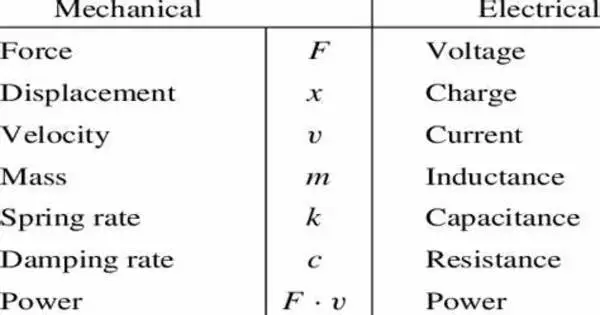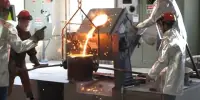Mechanical-electrical analogies depict mechanical systems as electrical networks. These are a method of drawing parallels between mechanical systems (those that include motion and physical forces) and electrical systems (those that involve current, voltage, and resistance). Initially, analogies of this type were used in reverse to assist in explaining electrical events in common mechanical terms. These comparisons are beneficial in understanding and analyzing both types of systems, and they can be especially effective in solving complicated engineering challenges.
In the nineteenth century, James Clerk Maxwell pioneered analogies of this type. However, as electrical network analysis progressed, it was discovered that certain mechanical issues might be solved more easily using an electrical analogy. The ability of network analysis to synthesize a network to meet a prescribed frequency function and the representation of an electrical network as an abstract topological diagram (the circuit diagram) using the lumped element model was particularly useful theoretical developments in the electrical domain.
Here are some key analogies:
- Force (Mechanical) – Voltage (Electrical): Force in a mechanical system is equivalent to voltage in an electrical system in this example. In mechanical systems, force creates motion, just as voltage induces current flow in electrical systems.
- Velocity (Mechanical) – Current (Electrical): In a mechanical system, velocity represents the rate of motion; in an electrical system, current represents the flow of electrons. A higher current equates to a higher velocity.
- Mass (Mechanical) – Inductance (Electrical): In mechanical systems, mass is analogous to inductance in electrical systems. Resistance to changes in motion or current flow is represented by both. A greater mass or inductance resists changes more strongly.
- Damping (Mechanical) – Resistance (Electrical): Damping in mechanical systems (e.g., friction) is akin to resistance in electrical systems. Both dissipate energy and oppose the motion or current flow.
- Spring (Mechanical) – Capacitance (Electrical): A spring in a mechanical system can be compared to capacitance in an electrical system. Springs store potential energy as deformation, while capacitors store electrical energy in an electric field.
This method is particularly useful in the construction of mechanical filters, which employ mechanical devices to carry out an electrical function. The technique, however, can be utilized to address purely mechanical problems and can even be expanded into other, unrelated energy domains. Analogy analysis is now a standard design tool when more than one energy domain is involved. It has the major advantage of representing the complete system in a cohesive, coherent manner.
These parallels enable engineers and scientists to use their knowledge of one domain to address problems in the other, making it easier to understand and build systems that have both mechanical and electrical components. While these parallels are valuable for conceptualizing and simplifying complicated systems, they are not always precise fits, and there are limitations to how far the analogy may be stretched.
















